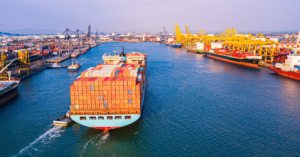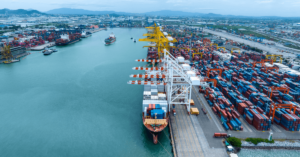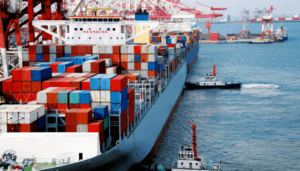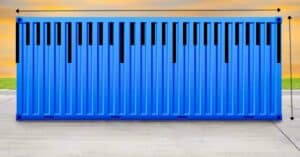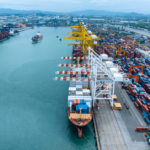What is Consolidated Freight in Shipping?
In consolidated freight, several small shipments (in cargo volume) from a location, belonging to different sellers, are combined to form a full container load (FCL) and shipped to a destination location.
Upon arrival at the destination, this cargo is segregated and redistributed to the respective customers.
The main benefits of freight consolidation are:
Saving in freight cost
Less than Container Load (LCL) cargo is packed with other similar cargo and ships as FCL to a destination. Several shippers thus share space inside a container and pay only for the volume that they take up, thus saving on cost.
Fewer damages to goods
Goods in a container that is partly filled (LCL) are more susceptible to damages than an FCL. This is because the LCL cargo may move around the container if not packed compactly with enough packing. Since a full container load is usually the maximum capacity of a container, the goods are less likely to move around the container.
You might also like to read:
- What is Importer of Record in Shipping?
- What is Ex-Works in Shipping?
- Understanding Transit Time in Shipping
- What is Full Truckload in Shipping?
- What is Groupage in Shipping?
Disclaimer: The authors’ views expressed in this article do not necessarily reflect the views of Marine Insight. Data and charts, if used, in the article have been sourced from available information and have not been authenticated by any statutory authority. The author and Marine Insight do not claim it to be accurate nor accept any responsibility for the same. The views constitute only the opinions and do not constitute any guidelines or recommendations on any course of action to be followed by the reader.
Do you have info to share with us ? Suggest a correction

About Author
Hari Menon is a Freelance writer with close to 20 years of professional experience in Logistics, Warehousing, Supply chain, and Contracts administration. An avid fitness freak, and bibliophile, he loves travelling too.
Latest Maritime law Articles You Would Like:
Latest News
- What is the Purpose of DG Shipping?
- What are Logistics Risks?
- How Port and Terminal Operators Can Control Emissions?
- Minimum Quantity Commitment (MQC) and Liquidated Damages in Container Shipping: Concept and Relevance
- MARPOL (The International Convention for Prevention of Marine Pollution For Ships): The Ultimate Guide
- The Ultimate Shipping Container Dimensions Guide
Subscribe To Our Newsletters
By subscribing, you agree to our Privacy Policy and may receive occasional deal communications; you can unsubscribe anytime.




